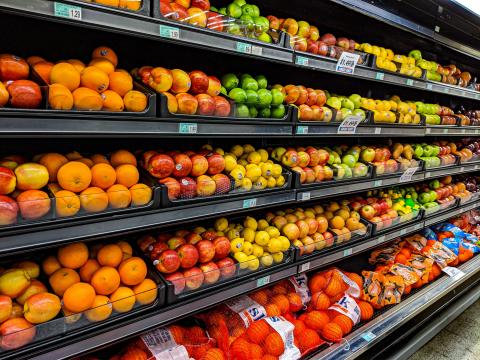Boxed cereals: how affordable are the healthiest options?
The Kid’s Food Guarantee
The Kid’s Food Guarantee is a set of actions which we think supermarkets should have in place as a minimum if we are to effectively tackle rising levels of food insecurity. These are actions that citizens have told us they are eager to see, and which align with existing areas of focus for food retailers.
Why cereal?
Cereal is a staple item for many families. A convenient breakfast option for young children, it can provide a good source of wholegrain and fibre, and is a food that caregivers and parents are often likely to give their children in the belief that it is a relatively healthy option. Many cereals are, however, high in sugar - with cereals one of the ten main categories contributing to children’s sugar intakes.
What did we do?
To monitor this Guarantee area we worked with Questionmark Foundation, an international non-profit think tank, to look at available cereals, their price, and nutritional information for the largest five major UK retailers: Aldi, ASDA, Morrisons, Sainsbury’s and Tesco. Data was collected for the period 18th to 24th April 2023.
We looked at all dry, ‘ready to eat’ cereals available across the retailers. We excluded cereals that require heating in acknowledgement of the barriers to food preparation that low income families can face, such as fuel poverty and accessing kitchen appliances (ref).
We used broad inclusion criteria to accurately reflect the range of cereals available in retailers. We included both those with and without children's figures on the packaging. We excluded cereal sold in single serve pots as these mostly required heating or are typically targeted towards adult commuters. Our final sample included 830 cereals in total, and 476 cereals when duplicate brands (i.e. the same product) sold across multiple retailers were removed. We included all products in the analysis when looking at price, as this can be different for the same product when sold across multiple retailers. We excluded duplicate products when looking at health and nutrition only, as for branded cereals this is the same regardless of where a product is stocked. We excluded 14 cereals sold in boxes over 1kg in size as these come with a higher upfront cost to consumers.
We assessed price and nutrition per 100g given the wide variety of box sizes available when buying cereal, but a portion size of cereal for children is likely to be less than this. The majority of cereal products use 30g as a recommended serving size for adults, but there is disagreement as to how realistic this is of typical serving sizes, and children may be eating a wide range of portion sizes. The British Nutrition Foundation suggest 3-6 tbsps of cereal as an appropriate portion size for children aged 1-4 years old, which roughly equates to 45-90g.
We used the Government’s Nutrition Profiling Model to assess the healthiness of cereals. Using this criteria foods scoring 4 or more points are classified as high in sugar, salt and/or fat (HFSS). As many cereals are high in sugar we also looked at the sugar content per 100g.
We will be running the same analysis again at regular intervals to assess where progress is being made. For further details on the methodology used in the Kid’s Food Guarantee and our inclusion and exclusion criteria, read our technical report.
What does good look like?
Ideally the cheapest cereals would be those with the best health profile, and a NPM score of less than 4 This would support families to access healthy and affordable staple products, so they do not end up with cheaper products which are less healthy.
What did we find?
Children’s marketing on cereals
8% of the cereals we looked at were marketed towards children, defined as products with images on the packaging that are designed to appeal to children (e.g. animals, cartoon characters, UFOs and fireworks).
Almost a third (30%) of those cereals with children’s marketing are HFSS products, with a score of 4 or more. However, while the health profile of these products could certainly be improved, they tend to be more expensive than cereals not marketed towards children.
The average price of cereals with children’s marketing on the packaging is £0.73 per 100g, compared to £0.60 for those without. Given that the marketing of products with child-friendly characters can lead to ‘pester power’, this may lead to families spending more on the cereals that are most appealing to their children than intended.
What we want to see:
Retailers continuing to offer healthy cereal options that are cheap, children’s marketing to be on cereals that are both healthy and cheap, and both retailers and manufacturers acting to reduce the sugar content of cereals which for many products remains very high.
What next?
We will be rerunning this analysis on a regular basis to see whether supermarkets are making any changes in the pricing structure and availability of healthy cereals on offer for families.



